Malware in websites is an increasingly alarming issue, with the potential to cause significant damage to a site’s functionality, compromise sensitive data, and harm a business’s reputation. Understanding how malware infiltrates websites is crucial in preventing these attacks. This article explores the common channels through which malware finds its way into websites and provides best practices to minimize the risk.
1. Vulnerable Plugins and Themes
One of the most common entry points for malware in websites is through vulnerable plugins and themes, particularly in platforms like WordPress or Joomla that rely on third-party extensions. Many website owners install plugins and themes to enhance functionality and improve user experience. However, not all of these extensions are well-maintained, and some may have security flaws that hackers can exploit. When developers fail to release regular updates or security patches, it leaves the door open for attackers to inject malicious code into a website.
Additionally, outdated or unsupported themes and plugins are easy targets for cybercriminals. Always ensure that your plugins and themes come from reputable sources and are regularly updated to mitigate the risk of malware attacks.
2. Insecure File Uploads
Insecure file uploads present another common channel for malware infection. Websites that allow users to upload files, such as images, PDFs, or documents, can become targets for attackers who disguise malicious code within these files. Once uploaded, the malicious file can execute commands that harm the website or compromise user data.
To safeguard your website from insecure file uploads, always implement strict security measures such as file validation, restrictions on file types, and antivirus scanning before accepting uploads. Additionally, avoid storing uploaded files in easily accessible directories and limit access to sensitive areas of your server.
3. SQL Injection
SQL injection is a type of attack where malicious SQL code is inserted into a database query, typically through form fields or URLs. If a website’s input validation is weak or non-existent, hackers can manipulate the SQL query to access, modify, or delete database content. This can result in unauthorized access to sensitive information, such as customer data, or allow attackers to install malware directly onto the site.
To protect against SQL injection, ensure that all inputs are properly sanitized and validated. Using parameterized queries and stored procedures can also help to minimize the risk of this type of attack.
4. Phishing Links and Emails
Phishing is a social engineering technique used by attackers to trick website administrators or users into revealing confidential information, such as login credentials. Phishing emails often contain links to malicious websites or attachments that, when clicked or downloaded, install malware on the website’s server or the user’s computer.
Attackers may also use compromised accounts to post phishing links directly onto a website, making it appear as though the links are legitimate. It’s essential to be cautious of unexpected emails or messages and to verify the authenticity of links and attachments before interacting with them.
5. Compromised Hosting Environments
Sometimes, malware doesn’t target your website directly but rather the hosting environment where it is stored. Shared hosting environments, in particular, can be vulnerable if another website on the same server becomes compromised. If the hosting server itself is attacked, malware can spread to all websites on that server.
To minimize the risk of hosting-related malware infections, opt for secure hosting services that prioritize security and regularly update their systems. Managed hosting providers often offer enhanced security measures, such as firewalls and intrusion detection systems, to help keep your website safe.
6. Backdoors
Backdoors are unauthorized access points that hackers create within a website to bypass normal authentication methods. Once a backdoor is installed, attackers can re-enter the website whenever they choose, even after the original malware has been removed. These backdoors are often hidden within the website’s code and can be difficult to detect without thorough security scans.
To prevent backdoors from being installed, it’s critical to regularly audit your website’s code and perform security scans to identify any suspicious activity or unauthorized access points.
7. Cross-Site Scripting (XSS)
Cross-Site Scripting (XSS) occurs when an attacker injects malicious scripts into web pages viewed by other users. These scripts typically execute within the user’s browser, allowing the attacker to steal sensitive information, manipulate website content, or even install malware. Websites that do not properly sanitize user inputs are especially vulnerable to XSS attacks.
To prevent XSS, it’s essential to validate and escape all user inputs, ensuring that any data entered by users is treated as plain text rather than executable code.
Conclusion
Malware in websites can infiltrate through multiple channels, including vulnerable plugins, insecure file uploads, phishing attacks, compromised hosting environments, and more. Staying vigilant and implementing strong security practices can significantly reduce the risk of malware attacks. However, even with the best precautions in place, infections can still happen.
If your website has been infected with malware, it’s crucial to act quickly to mitigate the damage. CabbageTree Solutions can help you get your infected website cleaned up and running smoothly again. Please feel free to contact us for assistance.
Please do contact us to get a free quote for your requirements.

